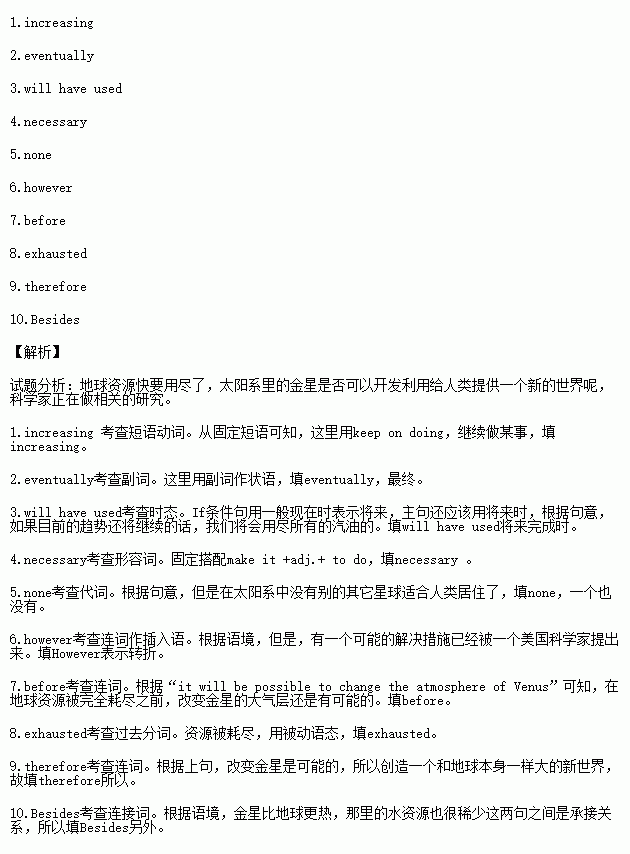题目内容
If the population of the Earth keeps on 1. (increase) at its present rate, there will 2. (eventual) not be enough resources left to support life on the planet. By the middle of the 21st century, if present trends continue, we 3. (use) up all the oil that drives our cars, for example. Even if scientists develop new ways of feeding the human race, the crowded conditions on Earth will make it 4. (necessity) for us to look for open space somewhere else. But 5. of the other planets in our solar system are capable of supporting life at present. One possible solution to the problem, 6. , has recently been suggested by an American scientist, Professor Carl Sagan. Sagan believes that 7. the Earth’s resources are completely 8. (exhaust), it will be possible to change the atmosphere of Venus and 9. create a new world almost as large as the Earth itself. The difficulty is that Venus is much hotter than the Earth. 10. , there is only a tiny amount of water there.

